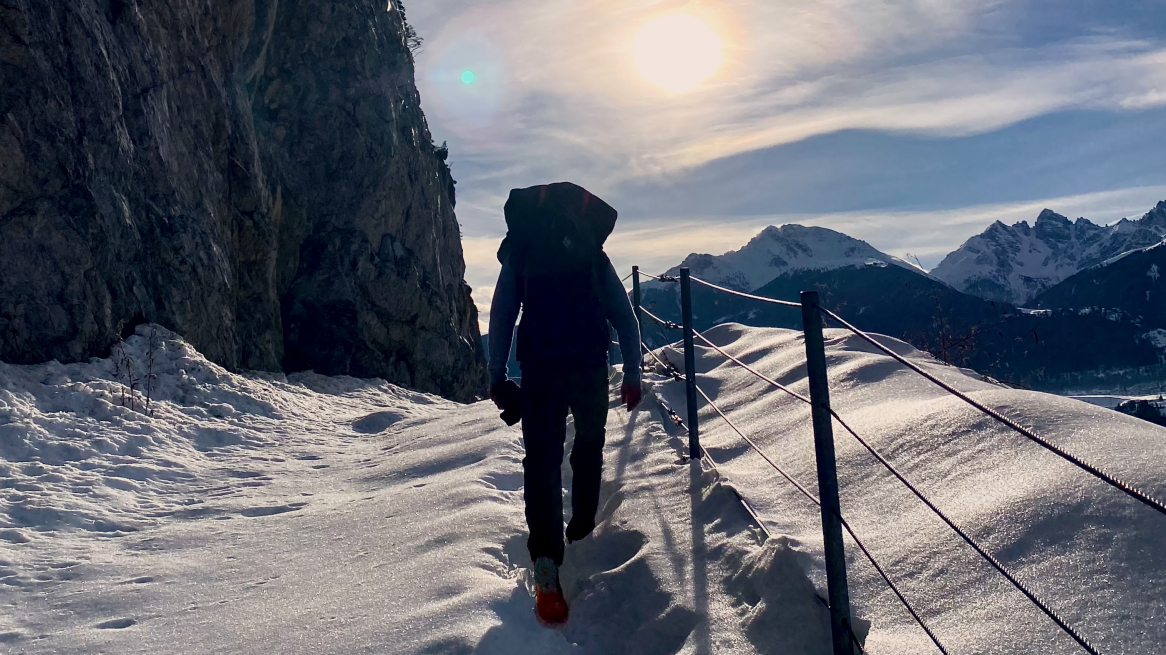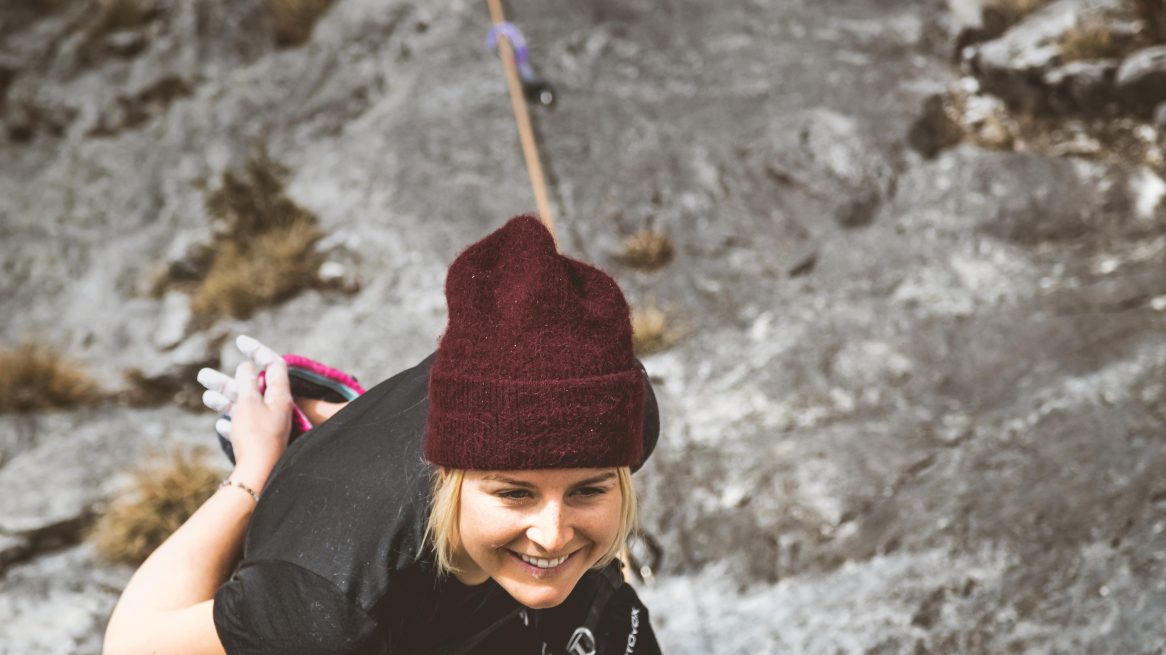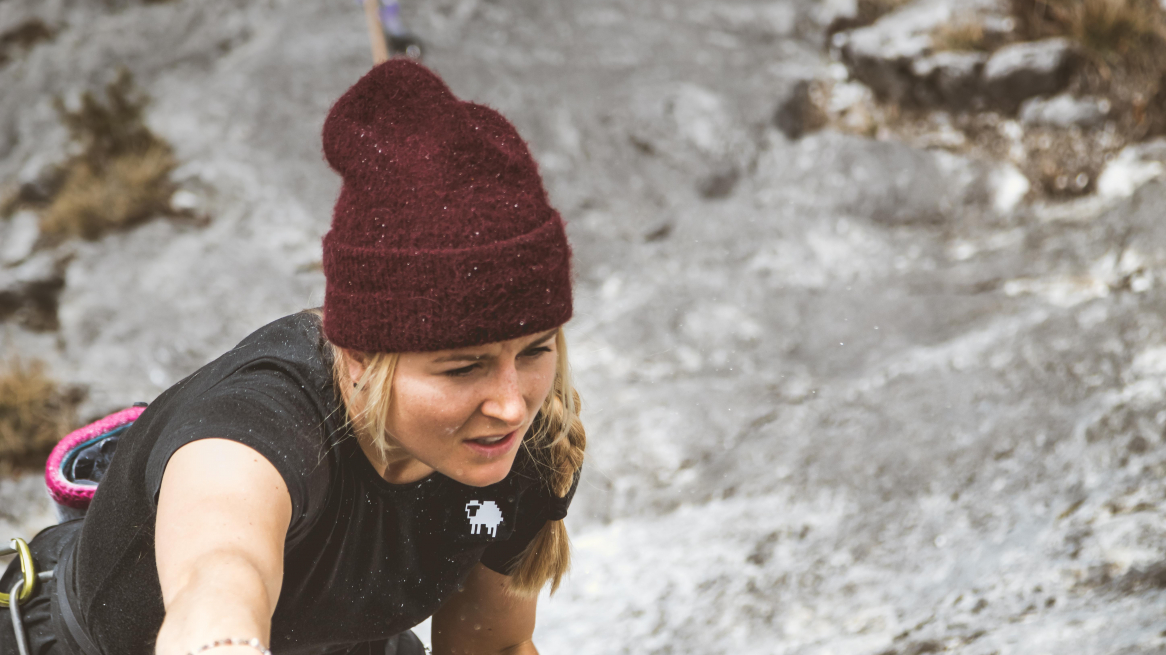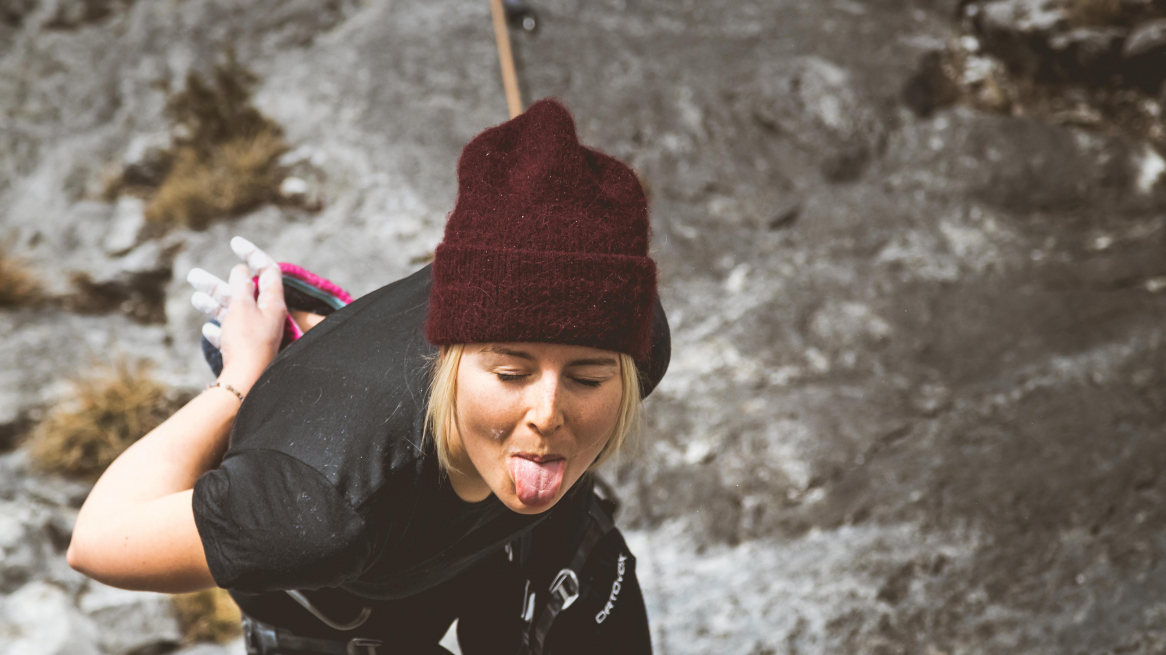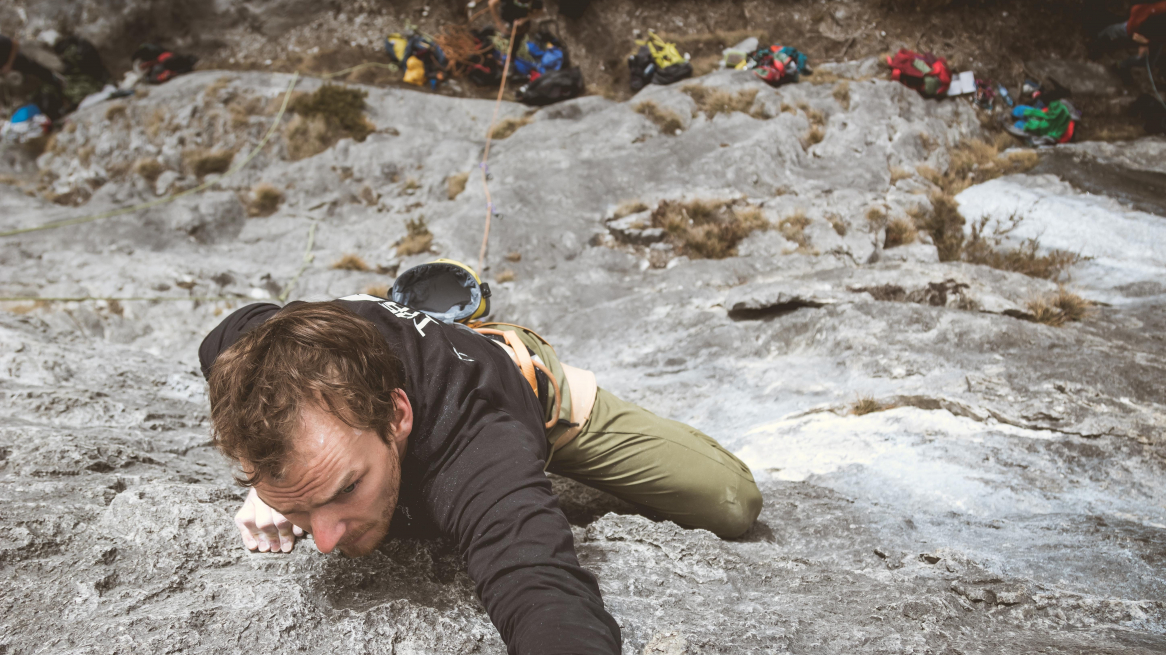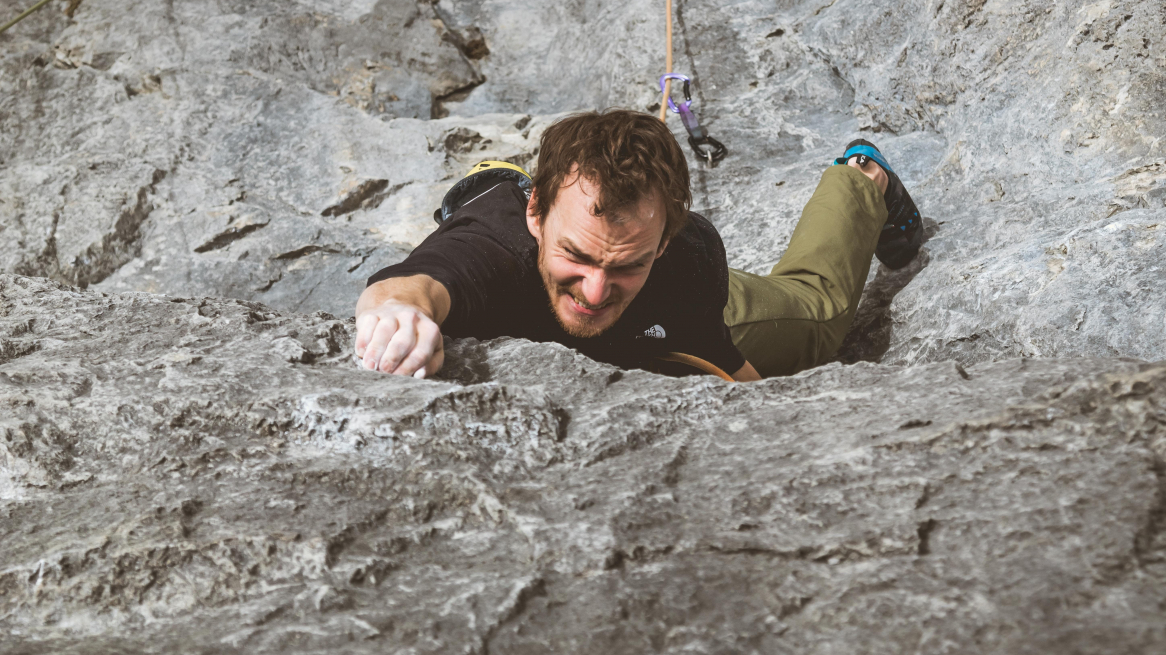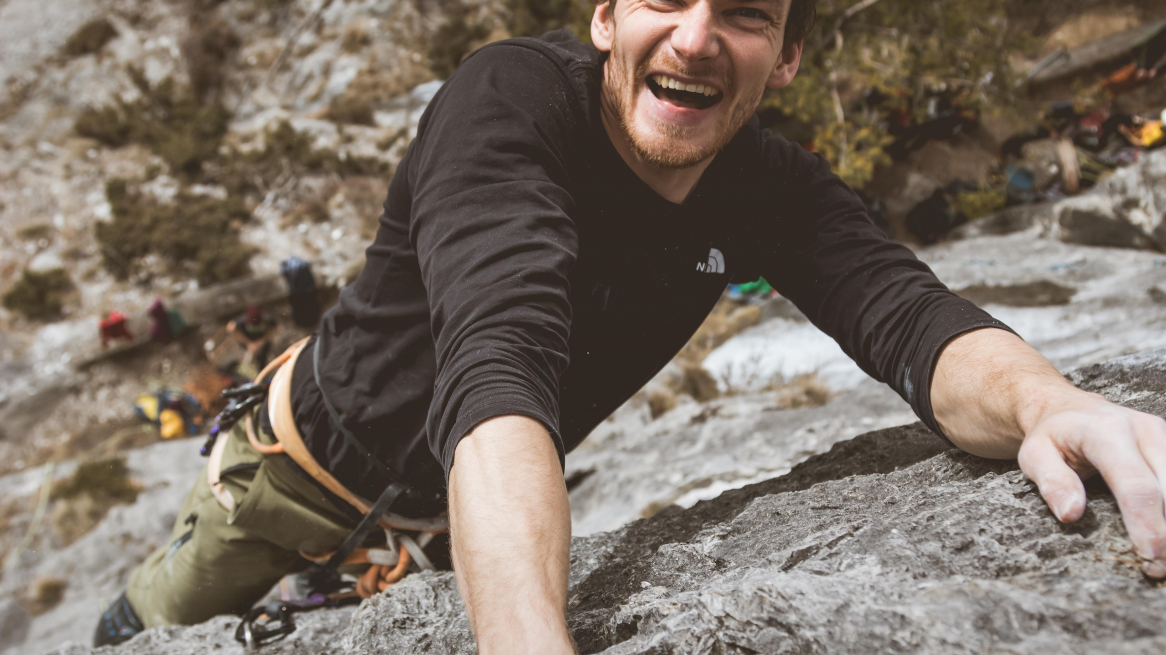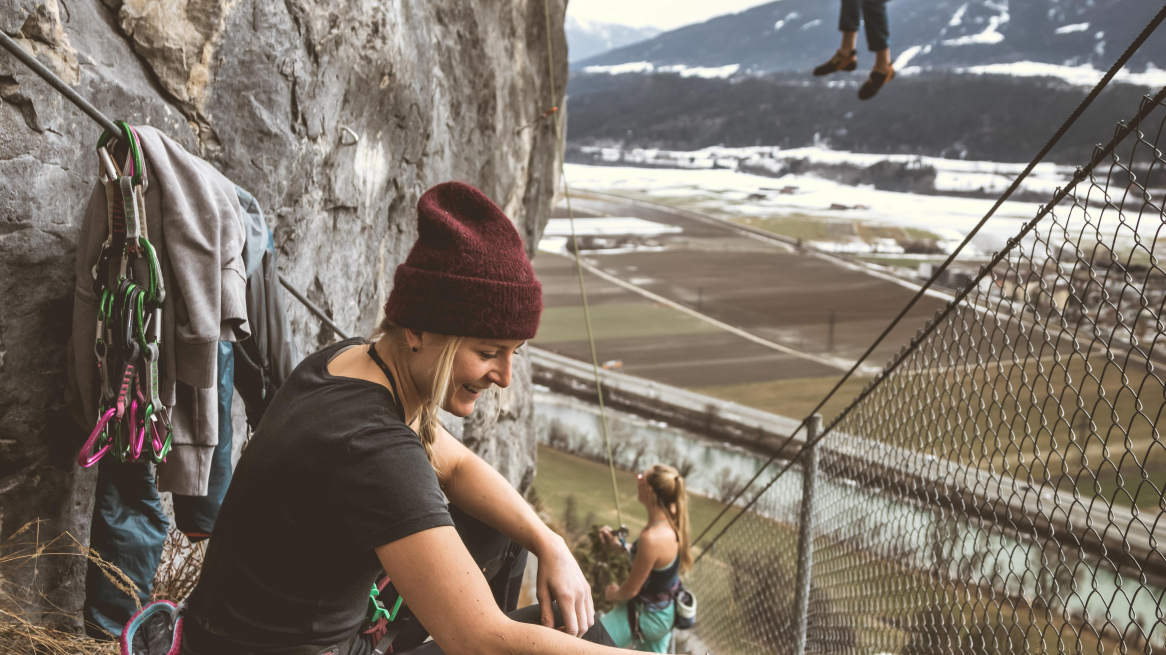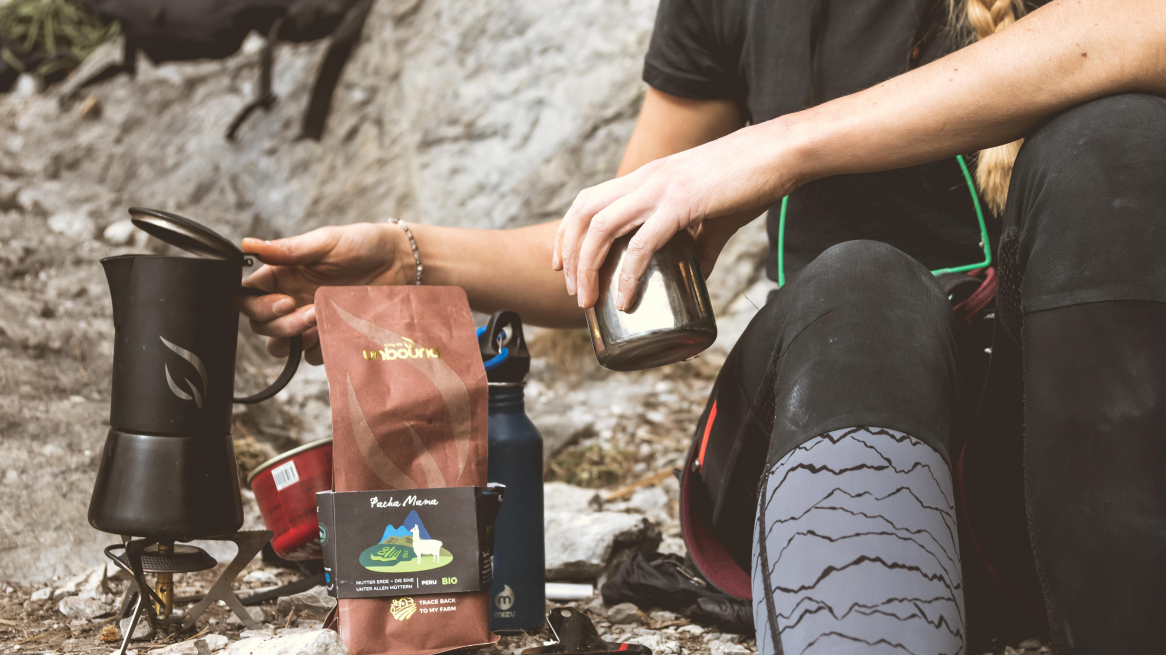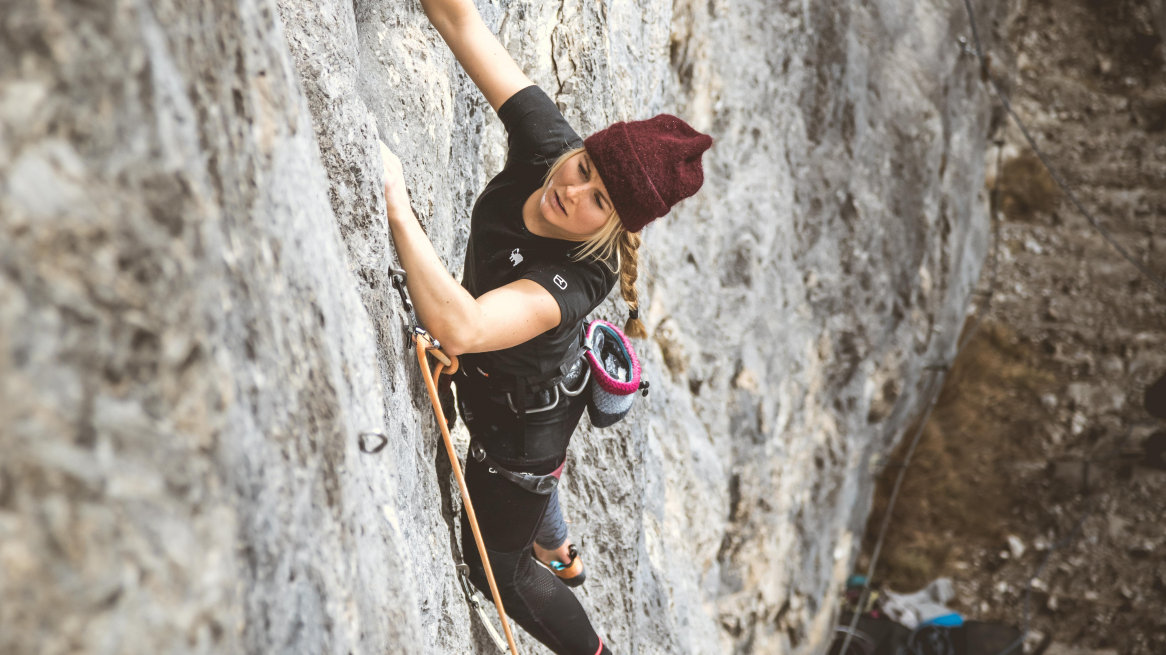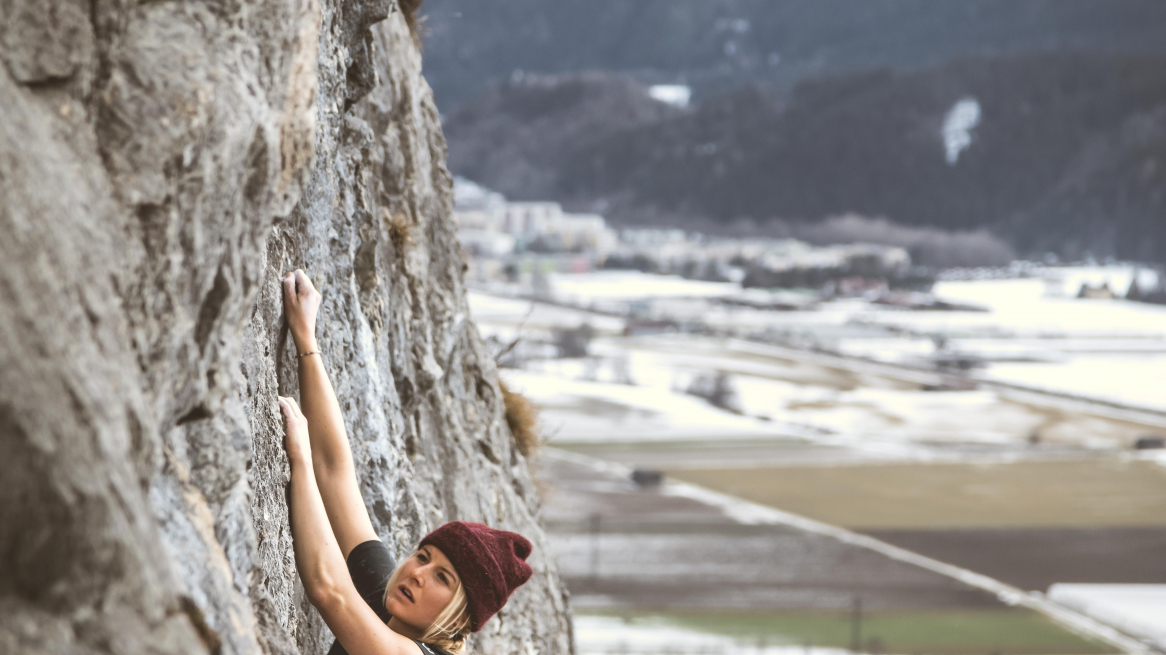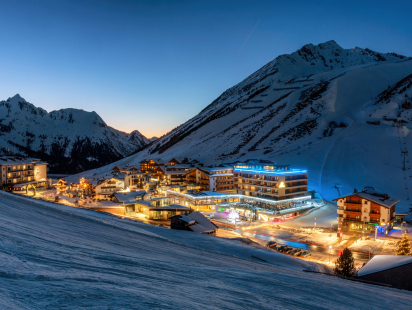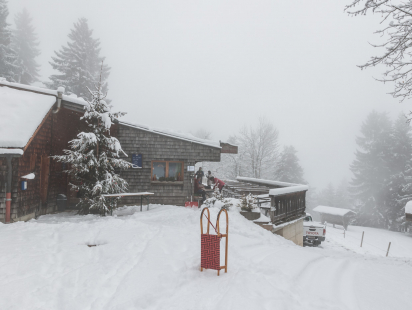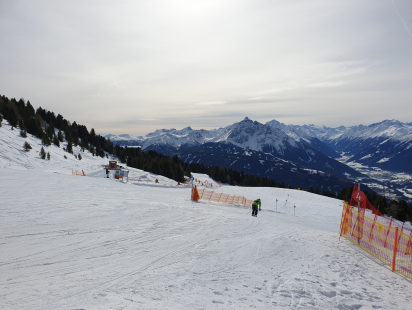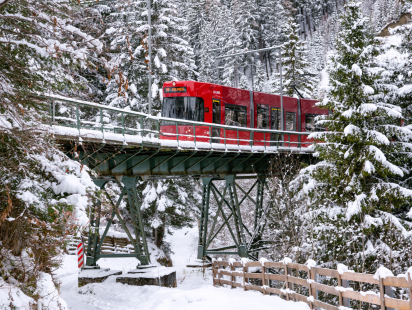The temperature display in the car shows -8°C. There is snow in the valley. Bright sunshine. Hmm... Sport climbing? My scepticism is great, the expectations low. How are my fingers supposed to stay on the rock at these temperatures? How do I squeeze my toes into the much too tight climbing shoe? Above all, the wall can never be dry! My opinion in the last years was quite clear: Winter is for skiing, summer is for climbing. Well, as is so often the case, my principles were once again thrown overboard!
SNOW STOMPING IN THE APPROACH
On this cold day in January it was admittedly a bit of a gamble to find dry rock. From the parking lot at the Red Cross in Zirl we trudged in the partly knee-deep snow on the hiking trail towards the climbing area Grottenwegwand. "At least we went for a little walk then," were my less than hopeful thoughts. Arriving at the wall, I was amazed. Dry rock! The good old (everyone's favorite) southern foehn made it possible - and so we climbed some of the beautiful routes in the area on that cold winter day.
A few days later we started the next attempt. A rainy period had already wiped away most of the snow in the valley and the unusually high temperatures allowed us to climb in T-shirts.
THE INGREDIENTS FOR WINTER CLIMBING
The Martinswand is in a perfect position for winter climbing. South-facing, close to the valley and always exposed to the wind. Another prerequisite for dry rock in winter is usually also whether the wall could get moisture from wet forests or green areas from above. Cracks and very flat slabs are also wet longer than steep wall climbing - overhangs often even withstand rain. Even if the wind ensures a quick drying from the rock, it is unfortunately extremely unpleasant on the climbing day and usually makes for icy cold limbs. Ideally, the belay partner should also always be in the sun and not in the shady forest. On a windless, very sunny day it may also have a few minus degrees.
EXTRA EQUIPMENT IN WINTER
Don't be fooled by these pictures of an exceptionally warm winter day - in sport climbing, the thick down jacket is standard equipment (the T-shirt rather rarely)! Gloves and warm socks are also recommended for belaying. During the breaks you will almost certainly be happy about a hot drink - whether with or without caffeine content is a matter of taste, but the former is recommended!
THE BEST WINTER CLIMBING AREAS AROUND INNSBRUCK
Grottenwegwand: After the approx. 30-minute approach from the Red Cross car park in Zirl, you reach the climbing area with some medium-difficulty tours from 5c to 6c+. Around the corner, further in the direction of Kaiser-Max-Grotte, there are a few more difficult routes from 7b+ to 8c.
Dschungelbuch: Right next to the road from Innsbruck to Zirl is probably the most legendary climbing area in Innsbruck (and beyond). Sport climbing history was written here. Hardmovers and fine technicians get their money's worth - most of the tours are in the 7th and 8th French grade, in the sector "Wonderful World" there are also some very nice 6s. The tours in the jungle are rather hard rated (personal opinion), but very varied and rewarding.
Gallery: After about 30 minutes access via a small hiking trail starting from the parking lot of the AV-Klettergarten you reach a ladder that leads over the train tracks to a plateau. Directly above the tracks is the climbing area with 58 routes, most of them in the 6th French grade with lengths of up to 32 meters. Ergo: Super rock, great views and lots of sun!
Photos: Mario Käppeli, cover photo: Lena Koller
Rate this article
Show me the location on the map
L - ives life to its limits,
E - xperiences most of her greatest moments on the mountain,
N - ever says no to good coffee and
A - dores her mum's homemade sauerkraut
Similar articles
Who has experienced them, these clear, cold winter nights in the high mountains? Maybe even under a…
The toboggan run from the Rumer Alm is one of my absolute favorite toboggan runs. At just…
When I came to Austria at the age of 16, winter sports were still pretty exotic for…
Snow-covered forests, exercise in the fresh air, enjoying the winter... I am regularly drawn to go outside,…

